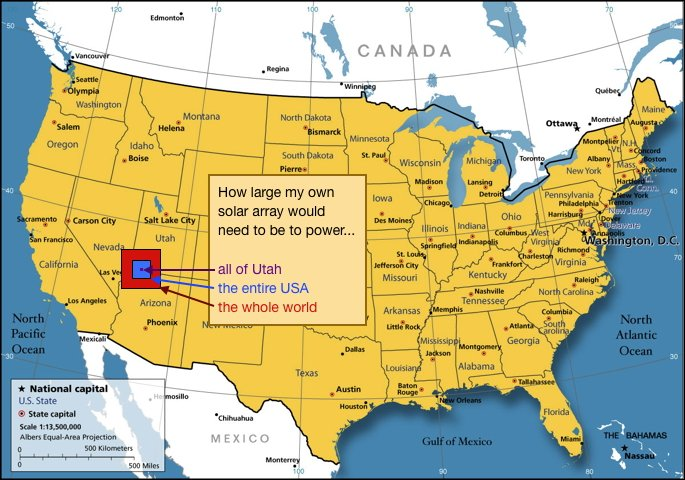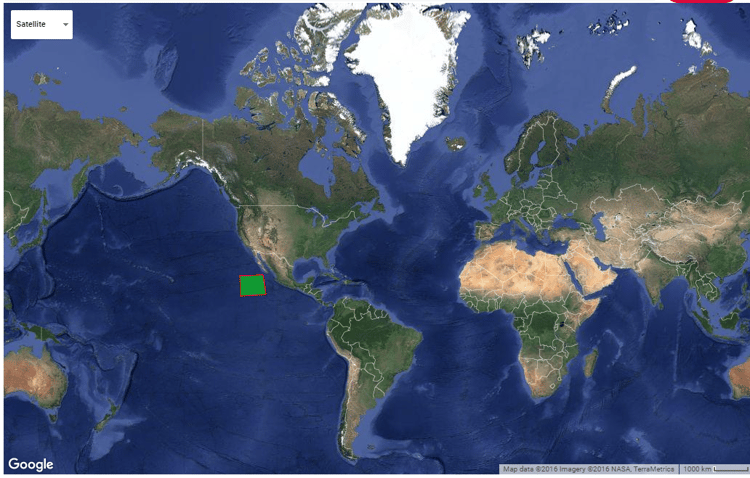You’ll hear it anywhere: solar power is a seriously underrated resource. The Sun, burning 92.96 million miles from Earth, hits our planet with more power in one hour than all of humanity will use in an entire year! And yet, last year in the U.S., solar only accounted for 0.6% of electricity generated. Worldwide, solar was reported to only produce 1.3% of all electrical demand.
What are we using instead? Coal, oil, natural gas, and other environmentally-harmful sources of energy. We’re actively contributing to global warming when we could be using the Sun’s abundant source of clean, renewable energy.
So say the world switches to solar… just solar. How many solar panels would we need to power the world? Let’s imagine it: everywhere you’d go there’d be solar panels cluttering every available space, right? Wrong! In reality, solar doesn’t need much space at all.

This image is based on a 2030 projection of the US Energy Information Administration’s estimation of global energy consumption, coming in at 198,721,800,000,000 kilowatt-hours. Divide that by 400 kilowatt-hours of solar energy production per square meter of land (using an array prototype based on 20% efficiency, 70% sunshine days per year, and 1,000 watts of solar energy hitting each square meter of land), and you get 496,805 square kilometers of solar panels, or 191,817 square miles.
To put this into perspective, the prototype used in this image has a higher than average efficiency rating, at least for residential installations. On average, the more expensive and harder-to-install PV panels are 17.13% efficient. Popular and easy-to-install panels come in at about 15.09% efficiency. Notably, because the popular marketplace solar panels are cheaper, they tend to bring in a higher return on investment than the more efficient solar arrays.
Now let’s do the equation again with today’s common marketplace solar panels. Keeping the 2030 projection of global energy consumption, divide that by 253 kilowatt-hours of solar energy production per square meter of land. Here, we’re using an averaged array prototype based off of 15.09% efficiency, 70% sunshine days per year, and 1,000 watts of solar energy across each square meter of land.
The total comes out to 785,462 square kilometers of solar panels (488063 square miles). That would take up this much space in the world:

It’s certainly bigger than the 20% efficient array prototype, but it still doesn’t take up that much space. Imagine it as a floating solar farm somewhere in the ocean. Or maybe it’s divided up across uninhabitable deserts.
These images are just meant to show “what if.” What if the world was powered by solar, alone? What if governments, companies, and homeowners never had to pay for electricity again? What would you do with all of that extra money?
Inspired and ready to make the switch to solar? Contact us today! We’re happy to discuss the advantages of solar with you, either online or over the phone. Call us at 407.331.9077. We’d love to hear from you!
